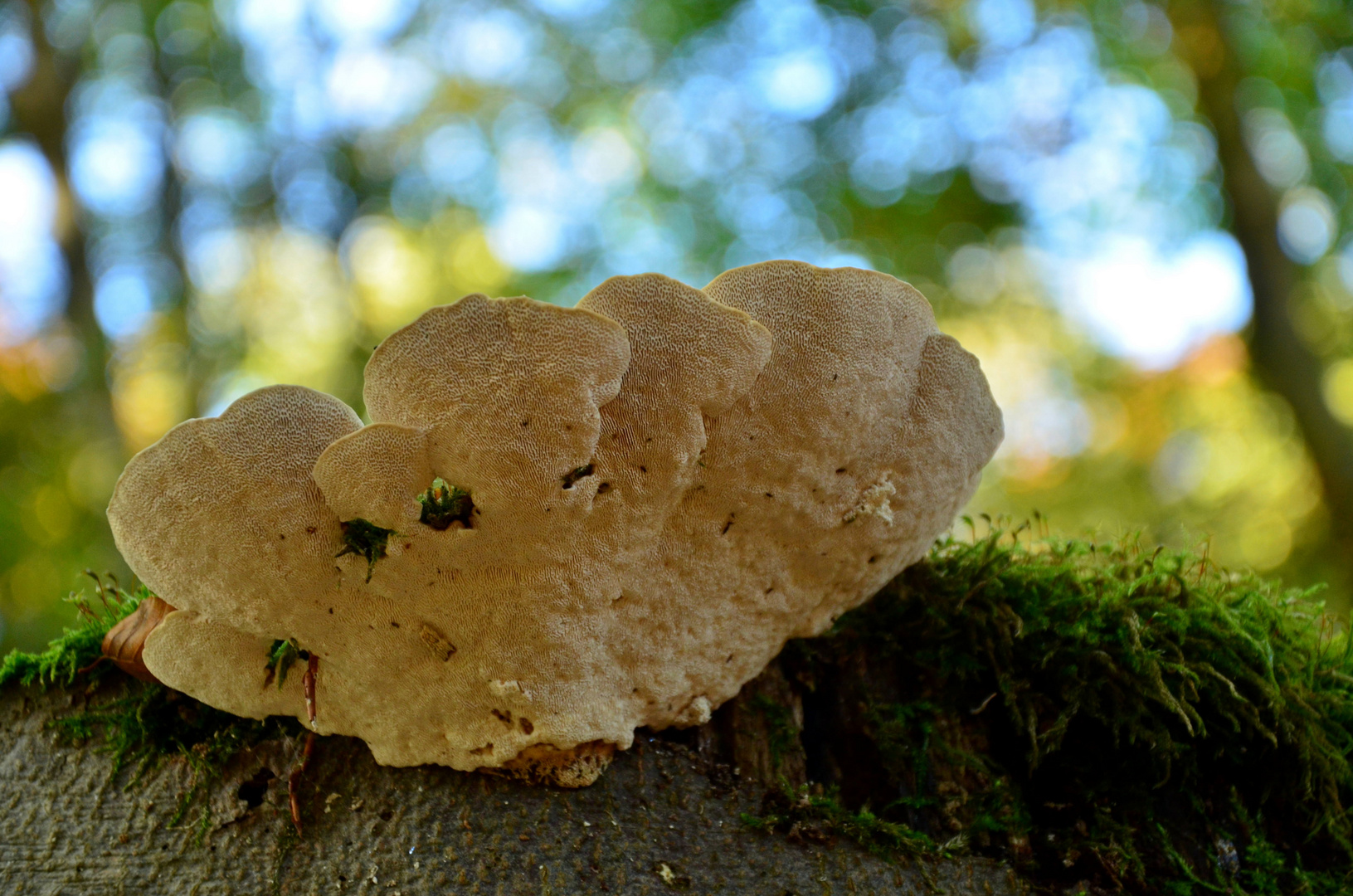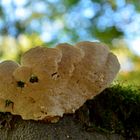Patterns of the forest --- Trametes gibbosa (Pers.) Fr.
Im Buchenwald findet man gerade im Oktober eine große Diversität an Baumpilzen. Die meisten von ihnen haben sich darauf spezialisiert, Totholz abzubauen. Diese Buckel-Tramete ist da ein gutes Beispiel. Wie alle Trameten bauen sie Lignin, eine der komplexesten Verbindungen der Natur, ab, ohne die kein Baum der Welt verrotten würde. Trameten kann man dabei leicht von anderen Baumpilzen unterscheiden, da sie sich nicht in verschiedene Schichten trennen lassen und es fast so aussieht, als ob die Sporen direkt dem Fruchtfleisch entspringen. Besonders ist der Buckel-Tramete noch der charakteristischer Algenüberzug, der grüne Ringe an der Oberseite entstehen lässt. Ein interessanter und wichtiger Pilz für das Ökosystem Buchenwald.
-------------------------------------------
Beech forests possess a surprisingly high diversity in fungi, especially during fall. Most mushroom forming representatives are specialized in degrading dead wood. This lumpy bracket is a good example. Like all Trametes, they are able to degrade lignin, one of the most complex molecules in nature. If this would not happen, no tree would decay and implemented nutrients would be stuck in the wood. Trametes are easy determined by looking at their flesh since they do not possess different layers of flesh and spores. For the lumpy bracket, you might find green rings on the top of the mushroom that derive from algae. At least for me, this is a super interesting fungus that is super important for the beech forest ecosystem.





















Karl-Heinz Kurre 18. Juni 2020, 9:44
Tolles Foto - klasse ErklärungLG
Karl-Heinz
Roman Dullek 23. Dezember 2019, 18:01
Wunderbares Foto und eine klasse Info. LG RomanGabi Jaeger 30. Oktober 2019, 21:37
Wieder eine tolle Info von dir! Danke!Dein Hintergrund ist dir super gelungen und
schmückt deinen Pilz sehr schön. Gefällt mir .
Liebe Grüße
Gabi
Annegret H. 27. Oktober 2019, 18:17
Vor dem Hintergrund kommt die Buckel-Tramete gut zur Geltung. Deine Informationen dazu sind für und spannend.LG Annegret